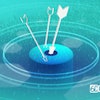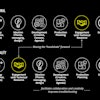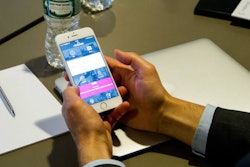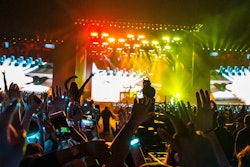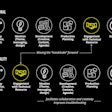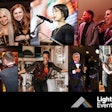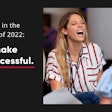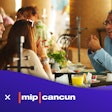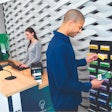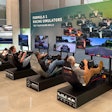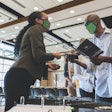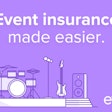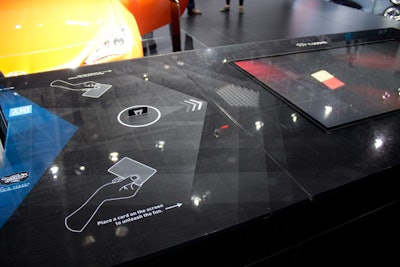
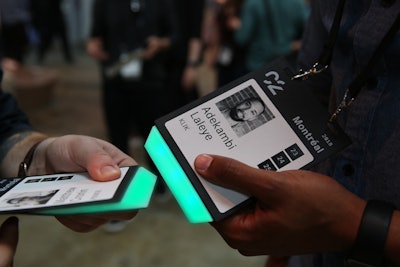
Badges are also an opportunity to give attendees necessary information—without making them carry around a heavy event program. At C2 Montréal last month, attendees wore klik name badges from Montreal-based technology company PixMob. In addition to displaying guest credentials in a large, easy-to-read format, the badges connected them to the klik technology—an audience engagement solution that can be used for ticketing and registration, data and analytics, event communication, and much more. The LED wearable can light up in 16-million different colors in response to remote control commands. In addition to badges, the klik technology can be used in wristbands and in buttons on lanyards; event organizers can rent or buy the wearables.
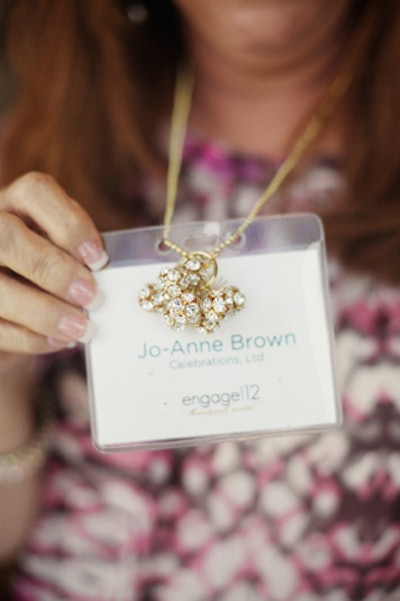
One of the primary functions of a name badge is to increase conversations and networking. For the ninth iteration of the Engage! luxury-wedding business summit, held in Las Vegas in 2012, name badges served as an icebreaker: The number of crystal charms on the tag identified how many times the badge-wearer had attended an Engage! conference. Veteran attendees had nine balls, while first-timers had one.
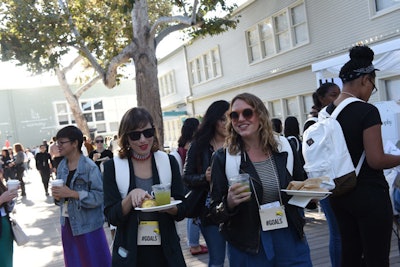
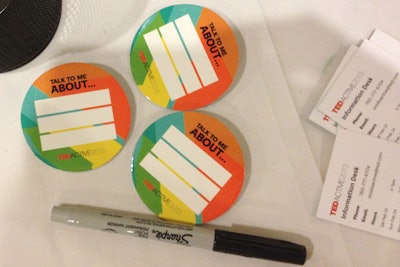
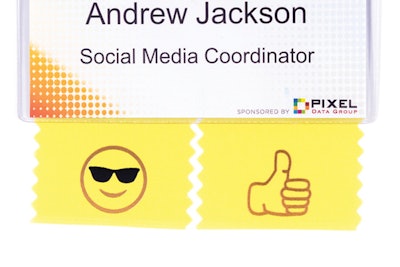
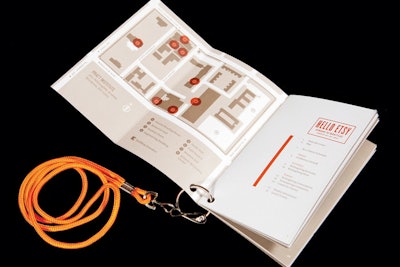
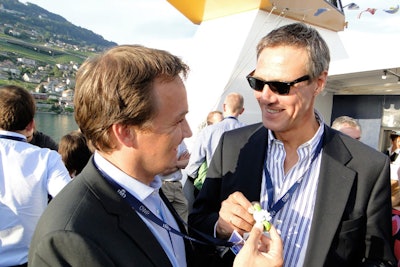
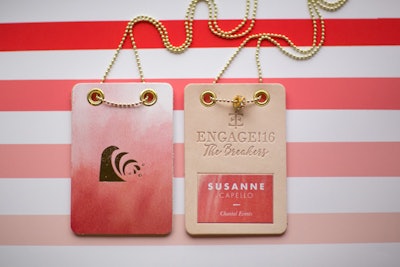
If every attendee is going to be wearing a badge, it's a good chance to enhance an event's decor. For the 2016 edition of Engage!, held in Palm Beach, Florida, Vanessa Kreckel of Two Paper Dolls designed the colorful leather name tags, which tied into the event’s tropical theme.
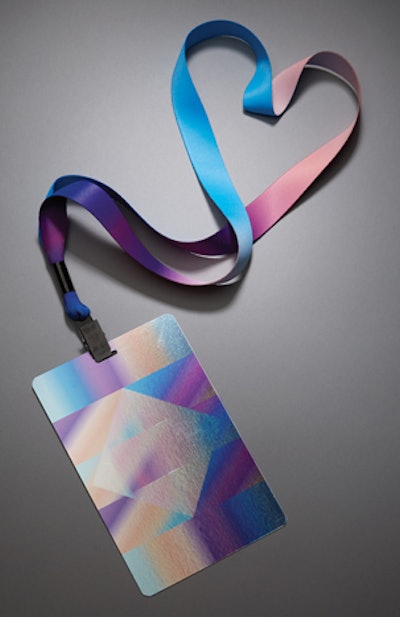
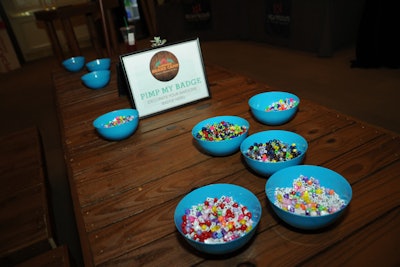
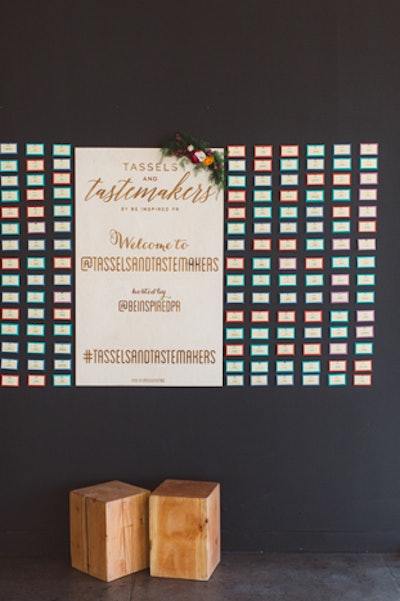
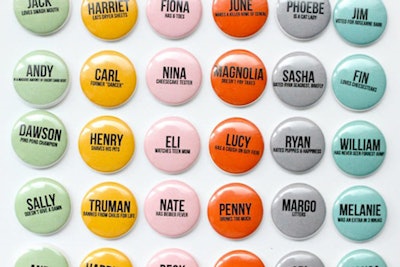
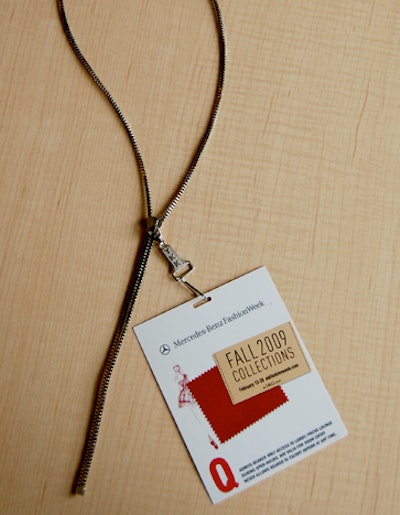
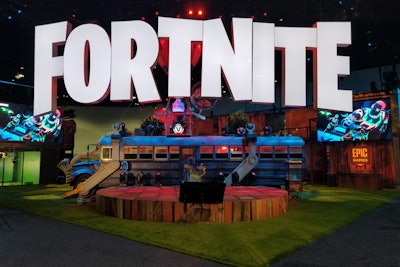
After developing one of the most popular games of 2017 in Fortnite, Epic Games expanded their E3 footprint this year with an eye-catching booth designed by Orange County-based event firm FGPG. The 10,000-square-foot immersive space drew guests in with the Fortnite logo displayed in 12-foot letters. Below the sign was a custom-fabricated "battle bus," a nod to the game.
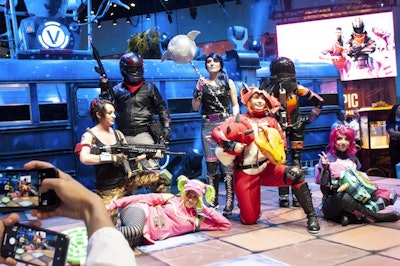
At the Epic Games booth, fans could pose with props from Fortnite. Other photo ops included a green-screen activation where guests could hang on a custom-fabricated hang glider; 3-D mapping allowed them to appear in scenes from the game.
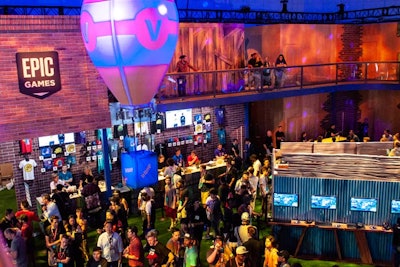
Other highlights from the two-story booth included 18-foot hot air balloons, a 100-pound disco ball, and a performance stage. More than 160 lighting cues matched the booth’s lighting with the sizzle reel of Fortnite being shown on large screens. The space was awarded the “Best Booth Design” award from GamesIndustry.biz.
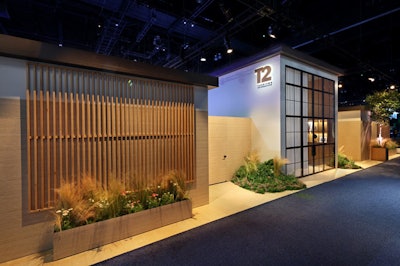
While Take-Two Interactive’s booth was solely for private meetings, the company still created a stylish, design-heavy space. Mirelle Phillips, director of experiential for Take-Two, worked with Tony Schubert of Event Eleven to design the 8,000-square-foot space, which was intended to serve as a calm retreat in the middle of the packed show floor. Studio Lily Kwong handed the landscaping throughout the space.
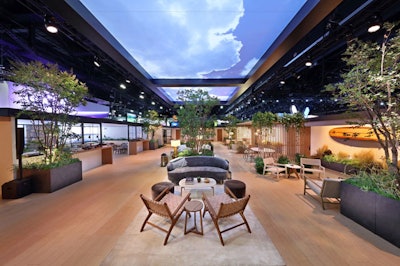
Inside, the one-story booth featured nine meeting rooms, a central courtyard, a cafe, a bar, a refreshment area, and a lobby. Screens displayed a blue sky overhead, and furniture from FormDecor offered comfortable, quiet spaces for meetings. Alpha & Omega Displays handled the fabrication, while 4 Wall designed the lighting and CBC Technical handled audio. Green Set provided the greenery throughout the space.
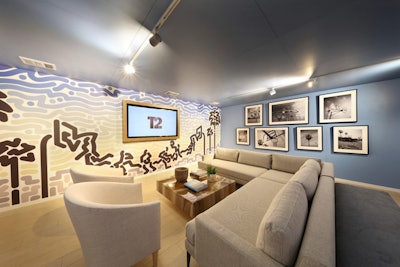
The booth stood out because, unlike other E3 booths, there were no demo kiosks or screens showing the publisher’s popular games, such as Red Dead Redemption 2 or WWE 2K. There was, however, one room devoted to Take-Two’s NBA2K. The stylish space had subtle basketball-theme artwork on the walls.
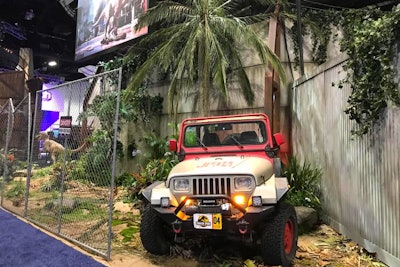
British video game developer Frontier Developments recreated scenes from its Jurassic World Evolution game for its booth at the South Hall. Designed by London-based marketing agency Envy, the booth depicted dinosaurs, chain-link fences, and broken-down cars—all of which proved to be popular photo ops throughout the week.
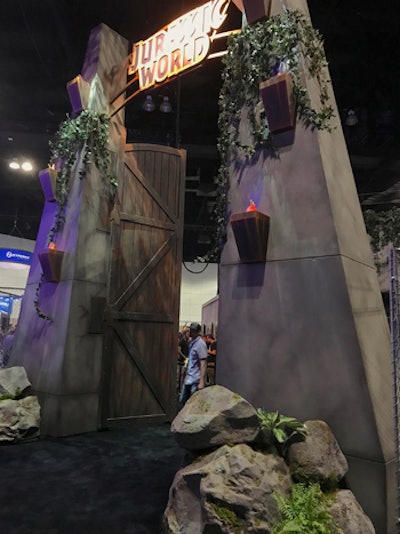
Attendees entered the booth through large wooden doors that evoked the movie and game—and drew attention on the crowded show floor.

To celebrate the upcoming Fallout 76—an online multiplayer role-playing game—the entrance to Bethesda Games Studios’ 20,000-square-foot booth depicted the game’s 1950’s-style dystopia. Purepartner by Design recreated the “Reclamation Day” scene from the trailer, using custom-made pendants, balloons, and confetti from Geffen Events that evoked the game’s retro feel. Actors dressed in 1950s attire greeted guests.
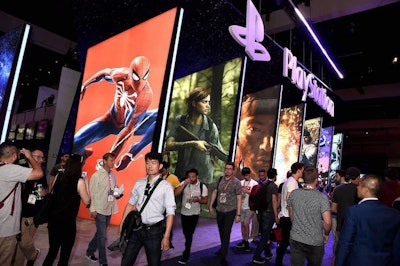
PlayStation drew attention to its booth with a series of massive panels that showed off colorful images from a variety of its upcoming games—including Ghost of Tsushima, Spider-Man, and Death Stranding. Large mirrors allowed the artwork to be seen from all angles. Also in the booth, a massive screen played clips and trailers from the highly anticipated game The Last of Us Part II, and additional decor was inspired by controller buttons.
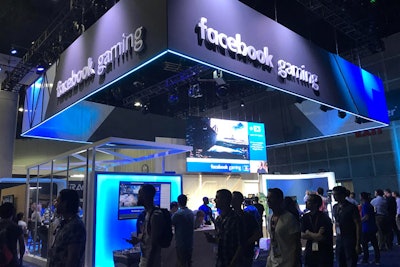
In its first year with a booth at E3, Facebook Gaming had a simple-yet-eye-catching space in the South Hall that incorporated the brand’s logos and colors. Designed to celebrate the Facebook Creator program, the booth had creator demo pods, an Oculus demo area, and a live stage where fans could watch game creators play in real time. The brand also had a presence in the West Hall, where Andrea Rene from What’s Good Games conducted interviews in a live studio, which were streamed on Facebook. Finally, a session at the E3 Coliseum discussed the brand’s Women in Gaming initiative, which champions diversity in the gaming industry.
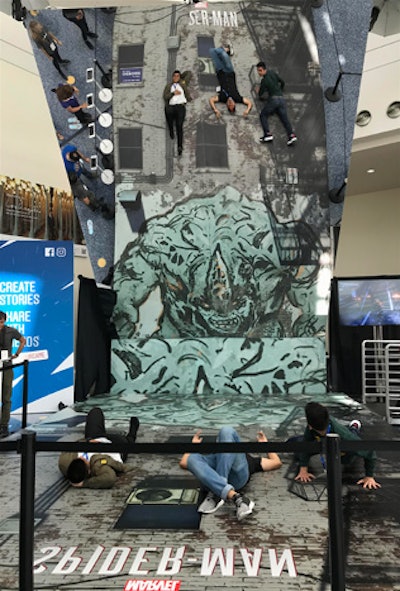
In another activation area, Facebook used mirrors for a photo op inspired by the new Spider-Man game. Fans could lay on a mural depicting the side of a building, and a large mirror above them created the appearance that they were hanging onto the building to escape the monster below. Additional promotions for the new Spider-Man game were scattered throughout the convention center, such as newspaper boxes with free copies of the fictional Daily Bugle paper. Jack Morton Worldwide produced the activation.
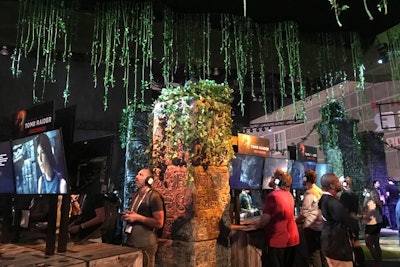
Fans and buyers could test out the upcoming Shadow of the Tomb Raider game in the Square Enix booth, which was designed to evoke the game with greenery and Mayan symbols.
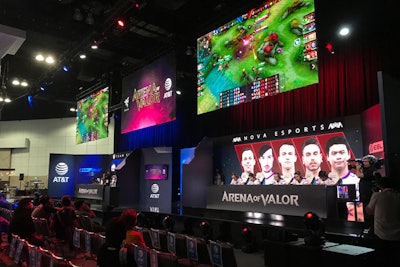
New this year was a 7,500-square-foot esports booth and stage. Located in the center of the South Hall with seating for 200 fans, the stage was a partnership between the ESA and ESL, the world’s largest independent esports company. A highlight of the week was Tencent’s Arena of Valor playoffs, part of an international gaming tournament with a prize of $550,000. The playoffs were held on June 12 and 13 on the stage, and broadcast on the Arena of Valor Twitch channel.
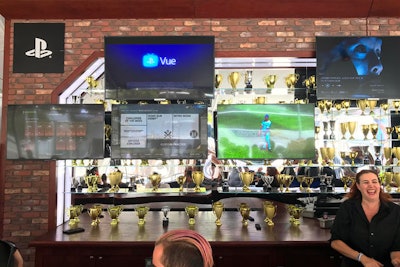
For the new baseball-theme video game MLB The Show 18, Sony Interactive Entertainment turned its booth into a bar and lounge. Located in the outdoor space between the South and West Halls, the area gave attendees a chance to beat the heat by grabbing a drink and sitting on plush couches to watch scenes from the game. There was also a batting cage on site. The bar had a mirrored back decorated with a variety of trophies and flat-screen TVs.
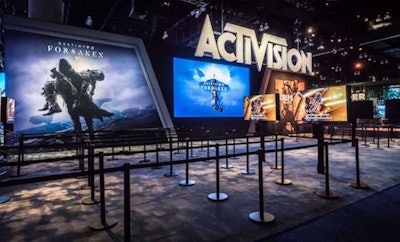
While Activision hasn’t always hosted its own booth, the publisher did have one this year to promote games including Destiny 2: Forsaken and Call of Duty: Black Ops. Working with Los Angeles-based fabrication company the Scenic Route, Activision drew attention with large signage that stood out above the crowd, as well as bright, eye-catching images from the games.
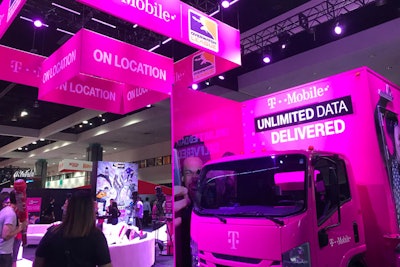
T-Mobile built an attention-grabbing lounge on the show floor where fans could relax, recharge, and watch live interviews with esports competitors. A bright pink bus was hollowed out and used to sell T-Mobile merchandise.
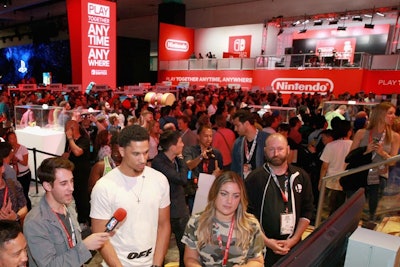
After transforming into a colorful, larger-than-life recreation of New Donk City for last year’s show, Nintendo’s booth was a bit more scaled down this year—but no-less visible. Themed around the new Super Smash Bros. Ultimate and Pokémon Let's Go! games, the bright red booth featured large-scale signage and massive televisions showing game trailers and clips. Memorabilia in glass cases were set up throughout the space.
